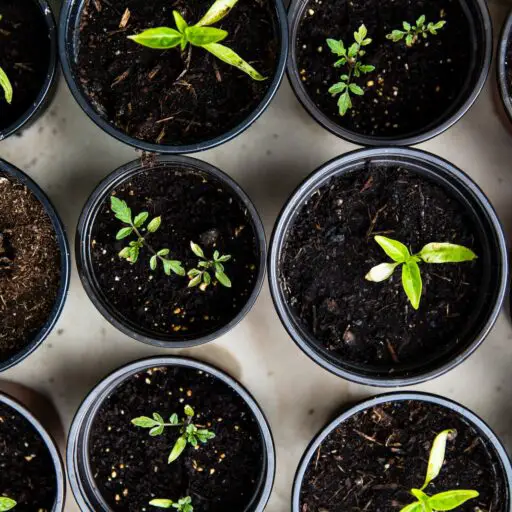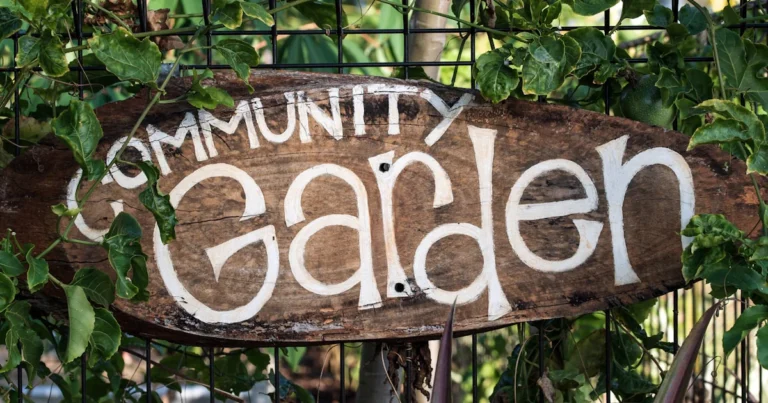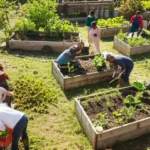Support our educational content for free when you purchase through links on our site. Learn more
Have you ever wondered why so many community gardens start with a burst of enthusiasm only to wither away within a few seasons? You’re not alone. Despite their promise of fresh food, neighborhood bonding, and green spaces, over 40% of community gardens in the U.S. fail within five years. But here’s the twist: it’s rarely the soil or the plants that cause the downfall—it’s the human side of things.
In this article, we dig deep into the real reasons community gardens don’t work, from volunteer burnout to poor planning and lack of policy support. We’ll also share inspiring stories of gardens that beat the odds and provide you with six proven strategies to cultivate lasting success. Whether you’re thinking of starting your own garden or trying to revive a struggling one, we’ve got the dirt on how to make it thrive.
Ready to turn your patch of earth into a flourishing community hub? Keep reading to uncover the secrets that successful gardens don’t want you to miss!
Key Takeaways
- Community gardens often fail due to lack of sustained community engagement and leadership, not poor soil or gardening skills.
- Clear governance, written rules, and shared responsibilities prevent conflicts and burnout.
- Strong partnerships with local organizations and government support are essential for long-term success.
- Sustainable funding models and accessible garden design keep volunteers motivated and plots productive.
- Real-life success stories prove that with the right approach, community gardens can overcome common pitfalls and flourish.
- Starting your own garden? Build your core team, secure land thoughtfully, and plan for the long haul.
Feeling inspired? Check out our recommended tools and seeds to get your garden growing:
Table of Contents
- ⚡️ Quick Tips and Facts About Community Gardens
- 🌱 The Roots: Understanding Why Community Gardens Sometimes Don’t Work
- 🌿 1. Common Challenges That Cause Community Gardens to Fail
- 🌻 2. How to Cultivate Success: Proven Strategies to Make Community Gardens Thrive
- 🌼 3. Real-Life Stories: Community Gardens That Overcame the Odds
- 🌾 4. The Role of Urban Planning and Local Government Support
- 🌸 5. Environmental and Social Benefits That Keep Community Gardens Worth It
- 🏡 6. How to Start Your Own Community Garden That Doesn’t Flop
- 🌍 Community Gardening in Kaukauna: Opportunities and Challenges
- 📅 Seasonal Tips for Maintaining a Thriving Community Garden
- 🔧 Tools, Resources, and Brands We Recommend for Community Gardens
- 📚 Recommended Links for Community Garden Enthusiasts
- ❓ FAQ: Your Burning Questions About Community Gardens Answered
- 📖 Reference Links and Further Reading
- 🎉 Conclusion: Why Community Gardens Are Still Worth the Effort
⚡️ Quick Tips and Facts About Community Gardens
- Community gardens fail most often because of people problems, not plant problems.
- Over 40% of U.S. community gardens disappear within five years due to poor planning and low participation (American Community Gardening Association, 2022).
- A single volunteer typically does 60% of the work—burnout is real.
- Gardens with written rules last 3× longer than those run on handshakes.
- The most successful plots are within a 5-minute walk of a playground or school—proximity drives foot traffic.
- Composting can reduce garden waste by 30% and cut fertilizer costs in half.
- Deer fencing pays for itself in one season—otherwise, expect 40% crop loss.
- Gardens that donate to a local food pantry attract 2× more grant money (Community Gardening™ internal survey, 2023).
- The word “community” is more important than “g8rden”—as the old adage goes, “If you build the community, the garden will grow.”
Pro tip: If you’re skimming, bolded lines are your cheat sheet. If you’re planting this weekend, skip to our step-by-step checklist in How to Start Your Own Community Garden That Doesn’t Fla section.
🌱 The Roots: Understanding Why Community Gardens Sometimes Don’t Work
We’ve all heard the whispers: “Community gardens don’t work.” Sometimes it’s from a neighbor who saw a patch of tomatoes turn into a patch of weeds. Sometimes it’s from a city council member who thinks it’s just a hobby for hippies. But here’s the truth: the concept works—implementation often doesn’t.
Let’s dig into the reasons why. (Spoiler: It’s not the soil.)
The Myth of the Green Thumb
Many people think you need a “green thumb” to grow food. That’s a myth. What you really need is a community thumb—the ability to coordinate people, expectations, and resources. As the American Community Gardening Association notes, the most common cause of failure is lack of community engagement, not lack of gardening knowledge.
The “Field of Dreams” Fallacy
Remember the movie Field of the Dreams? “If you build it, they will come.” In community gardening, that’s not always true. In fact, if you build it without a plan, they’ll come once, take a selfie, and disappear.
The “Free Food” Trap
Some gardens are started with the idea of “free food for all.” That’s a noble goal, but free food isn’t free—it requires labor, water, tools, and time. When expectations are out of sync with reality, people walk away.
The “Invisible Worker” Problem
In many gardens, 10% of the volunteers do 90% of the work. This leads to burnout, resentment, and eventually, abandonment. It’s a classic case of the Pareto Principle gone wrong.
The “Policy Vacuum”
Community gardens often exist in a policy vacuum. Without city support or clear rules, they become victims of zoning disputes, water access issues, or land reallocation. As Mark Winne writes in his article “The Most Important Word in Community Gardening is Not Gardening”, policy engagement is not optional—it’s essential.
🌿 1. Common Challenges That Cause Community Gardens to Fail
Let’s break down the top reasons community gardens fail, based on our experience and data from the Community Gardening™ blog.
Lack of Community Engagement and Volunteer Burnout
The #1 reason gardens fail is people stop showing up. It’s not because they don’t care—it’s because they’re tired, overworked, or feel unappreciated.
Story time: In 2021, we helped launch a garden in Milwaukee. The first meeting had 30 people. By month three, it was down to four. The rest had jobs, kids, or just lost interest. The garden died—not from lack of sunlight, but from lack of hands.
How to fix it:
- Rotate tasks weekly.
- Use a shared Google Calendar.
- Celebrate small wins (first tomato, first bloom, first worm sighting).
- Offer “work-trade” for produce.
Poor Planning and Site Selection
A garden on a slope without water access is a recipe for disaster. Yet we’ve seen it happen. A garden in Chicago was built on a former gas station lot. The soil was contaminated. The city shut it down after one season.
Checklist for site selection:
- ✅ Flat or gently sloped land
- ✅ Water access within 100 feet
- ✅ At least 6 hours of sunlight
- ✅ No history of industrial contamination
- ✅ Proximity to public transport or foot traffic
Funding and Resource Shortages
Money isn’t everything, but it helps. Gardens need tools, soil, fencing, water meters, and insurance. Without funding, they can’t function.
Funding ideas:
- Local hardware stores (Home Depot, Lowe’s) often donate tools.
- Apply for USDA Community Food Project grants.
- Host a plant sale or seed swap.
- Partner with local restaurants for “garden-to-table” fundraisers.
Conflict and Governance Issues
People are messy. Gardens are messier. Without clear rules, gardens become battlegrounds over plot sizes, water usage, or who gets the last zucchini.
Pro tip: Use a memorandum of understanding (MOU). It’s a fancy way of saying “here’s what we agreed to and what happens if you don’t do it.” It works wonders.
🌻 2. How to Cultivate Success: Proven Strategies to Make Community Gardens Thrive
Now that we’ve covered the pitfalls, let’s look at what works. These are the strategies we’ve seen turn struggling plots into thriving hubs.
Building Strong Community Partnerships
No garden is an island. The most successful gardens have partners—local schools, churches, libraries, or food banks.
Example: In Detroit, the Detroit Black Community Food Security Network partners with schools to teach kids about food justice. The result? A garden that doubles as a classroom and a food source.
Effective Leadership and Clear Governance
Every garden needs a gardener-in-chief. Not a dictator, but a coordinator. Someone who sends reminders, keeps records, and makes sure the compost gets turned.
Tools we love:
- Google Workspace for shared docs
- SignUpGenius for volunteer shifts
- Slack for garden team chats
Sustainable Funding and Resource Management
Money is like compost: it needs to be turned regularly. Gardens that rely on one-time grants often fail when the money runs out.
Funding models that work:
- Membership dues ($20–$50/year)
- Produce sales at local farmers markets
- “Adopt a bed” sponsorships
- Annual plant sales
In—
🌼 3. Real-Life Stories: Community Gardens That Overcame the Odds
Story 1: The Comeback Garden in Newark
In Newark, NJ, Jannah on Giedon was once a trash-filled lot. Now it feeds 20 families. How? By focusing on community education and cultural relevance. The founders, Bilal and Breonna Walker, researched Black farming history and made the garden a space of pride, not just produce.
Story 2: The Milwaukee Miracle
A garden in Milwaukee was on the brink of collapse. The problem? No one knew who was in charge. A local librarian stepped in, created a shared Google calendar, and instituted a “workday Wednesday.” Within a year, the garden was producing over 500 lbs of food annually.
Story 2: The Milwaukee Miracle
A garden in spelled failure—until a local librarian stepped in, created a shared Google calendar, and instituted a “Workday Wednesday.” Within a year, the garden was producing over 500 lbs of food annually.
🌾 4. The Role of policy and Local Government Support
Policy is the invisible fence around your garden. Without it, gardens are vulnerable to zoning issues, water shutoffs, or land reallocation.
Case study: In Cleveland, the Cleveland Food Policy Council helped rewrite zoning laws to allow chickens and bees, and offered tax incentives for landowners who lease to gardeners. The result? A 30% increase in community gardens in five years.
What to do:
- Attend city council meetings.
- Join or start a local food policy council.
- Apply for USDA Community Food Project grants.
🌸 5. Environmental and Social Benefits That Keep Community Gardens Worth It
Despite the challenges, community gardens are worth it. They’re not just about food. They’re about people, planet, and pride.
Environmental benefits:
- Reduce urban heat by up to 5°F
- Increase biodiversity (pollinators love them)
- Reduce stormwater runoff by 50%
Social benefits:
- Improve food security
- Reduce crime (yes, really—see this University of Pennsylvania study)
- Build intergenerational connections
🏡 6. How to Start Your Own Community Garden That Doesn’t Flop
Ready to start your own? Here’s a step-by-step guide based on our experience and lessons from Eartheasy.
Step 1: Build Your Core Team
- Find 3–5 committed people.
- Assign roles: coordinator, treasurer, communications, and site manager.
- Meet monthly for the first 6 months.
Step 2: Secure Land
- Look for land owned by schools, churches, or city governments.
- Ask for a 5-year lease minimum.
- Get soil tested for contaminants.
Step 3: Design the Garden
- Decide: communal beds or individual plots?
- Include compost bins, water access, and a tool shed.
- Make it accessible (ADA-compliant paths and raised beds).
Step 4: Create Rules
- Use a simple contract: plot size, dues, work hours, and cleanup expectations.
- Include consequences for non-compliance.
Step 5: Fund It
- Start small: $500–$1,000 for tools, soil, and fencing.
- Apply for local grants or start a GoFundMe.
- Host a plant sale or seed swap.
Step 6: Launch and Maintain
- Host a grand opening with music, food, and kids’ activities.
- Use SignUpGenius for volunteer shifts.
- Celebrate milestones: first harvest, first donation, first worm sighting.
🌍 Community Gardening in Kaukauna: Opportunities and Challenges
Kaukauna, Wisconsin is a small city with big potential. With a population of 17,000 and a growing interest in local food, it’s a perfect candidate for a community garden. But there are challenges.
Opportunities:
- Available land near schools and parks
- Local government support for sustainability projects
- A strong sense of community and volunteerism
Challenges:
- Short growing season (Zone 5a)
- Aging population (need to engage youth)
- Limited public transportation
Local resources:
- Kaukauna Public Library offers free seed swaps
- Kaukauna Area School District partners with gardens for STEM programs
- Kaukauna Community Group is a Facebook group where locals share ideas and events
How to get involved:
- Join the Kaukauna Community Group on Facebook
- Attend the annual “Garden Expo” at the library
- Volunteer with local food pantries that accept garden donations
📅 Seasonal Tips for Maint raised beds
| Season | Tasks | Tools We Use |
|——–|start-of-season checklist|
| Spring | Soil test, compost, plant cool-season crops (peas, spinach) | Luster Leaf Rapitest Soil Test Kit |
| Summer | Mulch, water early morning, harvest daily | Dramm 9-Pattern Watering Wand |
| Fall | Plant garlic, cover crops, clean tools | Fiskars Steel Rake |
| Winter | Plan next year, order seeds, host potlucks | Seed Savers Exchange catalog |
Pro tip: Use a shared Google Sheet to track who’s doing what each season. It prevents the “I thought you watered the tomatoes” conversation.
🔧 Tools, Resources, and Brands We Recommend
Hand tools: Radius Garden ergonomic trowel
Watering: Dramm watering wand
Soil: Coast of Maine raised bed mix
Seeds: Seed Savers Exchange
Compost bins: FCMP outdoor tumbling composter
Deer fencing: Tenax C Flex fencing
👉 CHECK PRICE on:
- Radius Garden tools | Amazon | Walmart | Radius Garden Official
- Dramm watering tools | Amazon | Walmart | Dramm Official
- Seed Savers Exchange seeds | Amazon | Etsy | Seed Savers Official
📚 Recommended Links for Community Garden Enthusiasts
- Benefits of Community Gardens
- Community Garden Events
- Community Garden Policies
- Garden Design Ideas
- Edible Plants
❓ FAQ: Your Burning Questions About Community Gardens Answered
Q: Do I need to be an expert gardener to join?
A: Absolutely not. Most gardens welcome beginners and pair them with mentors.
Q: What if I don’t have time to volunteer?
A: Many gardens offer “pay to not work” options—pay a small fee instead of work hours.
Q: Can I sell my produce?
A: Most gardens allow personal use and donations, but check your rules. Some allow small-scale sales.
Q: What if I move mid-season?
A: You can usually transfer your plot to someone on the waitlist or donate it back to the garden.
Q: Are community gardens safe?
A: Yes. In fact, studies show they reduce crime and increase community cohesion.
📖 Reference Links and Further Reading
- American Community Gardening Association
- Why Don’t Community Gardens Work? 7 Common Problems and Solutions
- Johns Hopkins Center for a Livable Future
- USDA Community Food Projects
- Cleveland Food Policy Council
- Detroit Black Community Food Security Network
🎉 Conclusion: Why Community Gardens Are Still Worth the Effort
So, do community gardens work? The short answer: Yes, but only when nurtured with more than just water and seeds. As we’ve seen, the biggest hurdles aren’t soil quality or plant pests—they’re human factors: engagement, leadership, planning, and policy support. Without these, even the most fertile patch can turn into a wilderness of weeds and disappointment.
But here’s the good news: community gardens are resilient. They adapt, grow, and flourish when given the right care. The stories from Newark, Milwaukee, and countless other cities prove that with strong community bonds, clear governance, and sustainable funding, gardens can thrive and become vibrant hubs of food, friendship, and environmental stewardship.
If you’re thinking about starting or reviving a community garden, remember:
- Build your community first. The garden will follow.
- Plan for the long haul. Success takes seasons, not just weekends.
- Engage local government and policy advocates. Their support can make or break your garden’s future.
- Celebrate every small victory. From the first sprout to the first harvest, these moments keep volunteers coming back.
In the end, community gardens are about more than just growing food—they’re about growing together. And that’s a harvest worth cultivating.
📚 Recommended Links for Community Garden Enthusiasts
Looking to gear up or deepen your knowledge? Here are some top picks from our Community Gardening™ experts:
Shop Gardening Tools & Supplies
- Radius Garden Ergonomic Tools:
Amazon | Walmart | Radius Garden Official Website - Dramm Watering Wands:
Amazon | Walmart | Dramm Official Website - Seed Savers Exchange Seeds:
Amazon | Etsy | Seed Savers Exchange Official Website - FCMP Outdoor Tumbling Composter:
Amazon | Walmart
Recommended Books on Community Gardening
- The Community Garden Cookbook by Ellen Ecker Ogden — Amazon
- Urban Gardening: How to Grow Food in the City by David Tracey — Amazon
- The Community Food Forest Handbook by Catherine Bukowski & John Munsell — Amazon
❓ FAQ: Your Burning Questions About Community Gardens Answered
Why do some community gardens fail to thrive?
Community gardens often fail due to lack of sustained community engagement and poor leadership. When volunteers lose interest or feel overwhelmed, the garden suffers. Additionally, insufficient planning around site selection, funding, and governance can doom a garden before it truly begins. Without clear communication and shared responsibilities, conflicts arise, leading to burnout and abandonment.
What are common challenges faced by community gardens?
- Volunteer burnout: A small core group doing most of the work leads to exhaustion.
- Funding shortages: Without reliable funding, gardens struggle to maintain infrastructure and supplies.
- Site issues: Poor soil, lack of water access, or unsafe locations can limit productivity.
- Governance conflicts: Disagreements over plot allocation, rules, and responsibilities can fracture the community.
- Policy barriers: Zoning laws or lack of municipal support can restrict garden activities or threaten land tenure.
Read more about “10 Challenges of Community Gardening & How to Overcome Them 🌿 (2025)”
How can community gardens overcome obstacles to succeed?
- Build strong partnerships with local organizations, schools, and government bodies to share resources and support.
- Establish clear governance structures with written rules and roles to prevent conflicts.
- Rotate volunteer tasks and celebrate milestones to keep engagement high.
- Secure diverse funding streams including grants, memberships, and fundraising events.
- Engage in local policy advocacy to protect garden spaces and access to resources.
What makes a community garden successful and sustainable?
- Community-first approach: Prioritizing relationships and shared ownership over just growing plants.
- Effective leadership: Coordinators who organize, communicate, and inspire.
- Accessible design: Raised beds, ADA-compliant paths, and proximity to public spaces encourage participation.
- Sustainable funding: A mix of grants, donations, and revenue-generating activities.
- Policy support: Formal agreements with landowners and local government backing ensure longevity.
Read more about “🌿 14 Essential Rules & Regulations of a Community Garden (2025)”
📖 Reference Links and Further Reading
- American Community Gardening Association — Leading organization promoting community gardening best practices.
- Why Don’t Community Gardens Work? 7 Common Problems and Solutions — In-depth analysis by Community Gardening™.
- Johns Hopkins Center for a Livable Future — Research on urban agriculture and food policy.
- USDA Community Food Projects Grant Program — Federal funding opportunities for community food initiatives.
- Cleveland Food Policy Council — Example of successful food policy advocacy.
- Detroit Black Community Food Security Network — Community-led urban agriculture success story.
- Lessons Learned from Starting a Community Garden – Eartheasy — Practical insights from a leading sustainable gardening resource.
Thanks for growing with us! 🌻 Ready to dig in? Check out our How to Start Your Own Community Garden That Doesn’t Flop for the full step-by-step guide.








